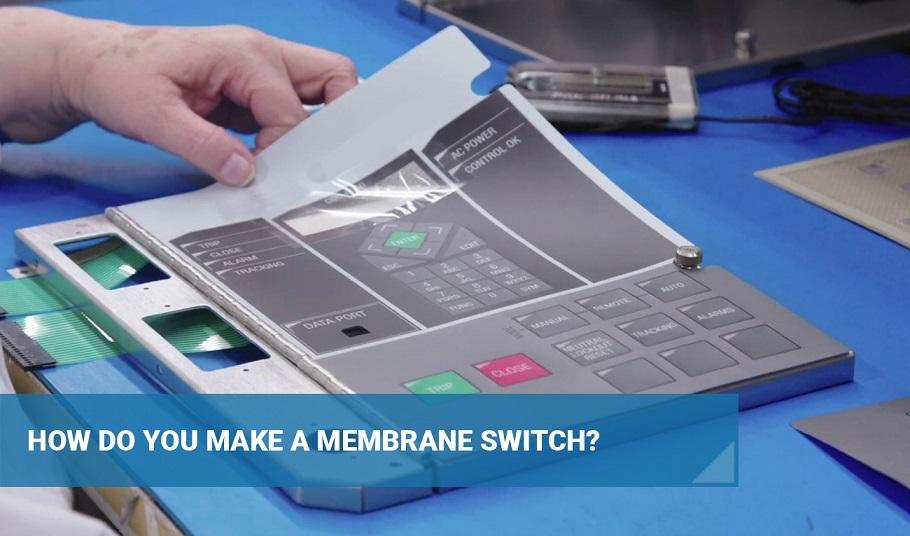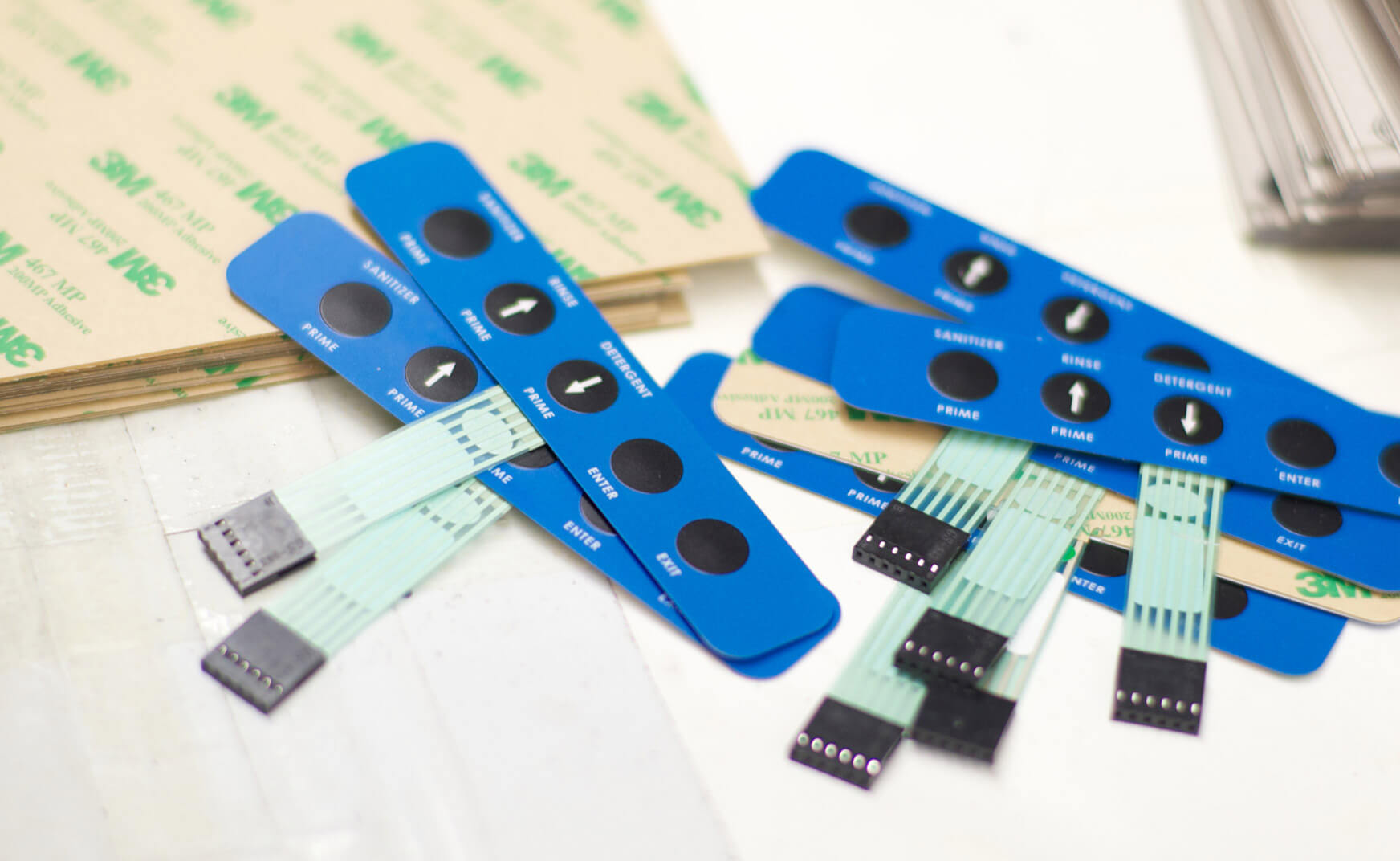Essential Features to Search For When Choosing a Membrane Switch
Essential Features to Search For When Choosing a Membrane Switch
Blog Article
Just How Membrane Layer Switches Contribute to the Resilience of Electronic Control Panels
Membrane layer buttons play an important function in enhancing the sturdiness of electronic control panels, mainly via their multi-layered construction which supplies effective defense versus ecological elements such as wetness and dirt. This design not only lessens the threat of circuit damages and corrosion but additionally promotes simplicity of maintenance due to its seamless surface area. Moreover, the lack of moving parts substantially lowers the probability of mechanical failings, making membrane layer changes ideal for demanding applications. The effects of these features expand beyond plain defense, increasing concerns concerning their wider influence on functionality and user experience.
Meaning of Membrane Buttons

Membrane layer buttons are created to be thin and lightweight, making them appropriate for applications where room is limited. They can be produced in various shapes, sizes, and colors, using adaptability in layout that meets aesthetic and practical requirements. In addition, membrane layer buttons can include numerous technologies, such as responsive feedback and LED signs, improving individual experience.
Because of their construction, membrane buttons are often immune to dust, moisture, and general wear, adding to their sturdiness in requiring settings. Their seamless style not only facilitates easy cleansing however also reduces the danger of mechanical failure, making them a preferred choice for manufacturers looking for trustworthy interface in their digital control panels.
Defense Against Environmental Factors
The layout of membrane changes inherently provides a degree of security against different environmental aspects, which is essential for maintaining capability in difficult conditions - Membrane Switch. These buttons are generally constructed with layers of flexible materials that shield internal components from moisture, dirt, and impurities. By enveloping the wiring, membrane layer switches over lessen the threat of brief circuits and corrosion, which can dramatically hinder efficiency
Additionally, using robust adhesives and sealers during production boosts their resistance to ecological challenges. Membrane layer buttons can sustain exposure to chemicals and solvents, making them suitable for sectors such as food processing and healthcare, where health and cleanliness are extremely important. Their smooth surface layout additionally stops the buildup of dust and microorganisms, helping with easier cleansing and maintenance.
Temperature level variations are one more ecological concern, and membrane layer switches are engineered to work effectively across a vast array of temperatures (Membrane Switch). This versatility ensures that control board stay functional in numerous settings, from go to my blog industrial atmospheres to customer electronic devices
Effect On Individual Interaction
User interaction with electronic control panels is significantly affected by the style and capability of membrane layer buttons. These buttons offer a tactile user interface that enhances the general customer experience, enabling intuitive navigation and control. Their receptive nature ensures that customers receive instant comments upon activation, which is critical for tasks needing precision and performance.
In addition, the smooth surface area of membrane switches assists in very easy cleansing and upkeep, advertising individual confidence in the reliability of the interface. This tidiness is particularly crucial in atmospheres where health is extremely important, such as clinical or food handling setups. Furthermore, the small and lightweight design of membrane switches contributes to the visual allure of control board, encouraging user interaction via a contemporary and streamlined look.
Additionally, the assimilation of visual components, such as published icons and backlighting, helps customers promptly identify functions, reducing the learning curve related to new tools. Consequently, individuals can operate tools better, resulting in enhanced performance and complete satisfaction. In summary, membrane layer buttons play a critical function more information in boosting individual communication by combining performance, looks, and simplicity of use, inevitably resulting in boosted functional performance.
Style Adaptability and Personalization
Design adaptability and modification are crucial aspects of membrane layer switches, making it possible for producers to customize electronic control panels to specific applications and individual demands. This adaptability enables the assimilation of various design elements, such as colors, graphics, and appearances, which can enhance the aesthetic allure and user engagement of the control panel.
Membrane layer switches can be personalized in dimension and shape, suiting a large range of tools and applications, from commercial machinery to customer electronics. This versatility ensures that producers can develop instinctive interfaces that straighten with individual expectations and operational demands. Furthermore, the ability to incorporate unique functions such as backlighting or tactile comments additionally boosts functionality, permitting a much more interactive experience.
Additionally, the manufacturing procedure for membrane layer switches over sustains the rapid prototyping of designs, allowing producers to repeat and improve their principles rapidly. This capacity not just accelerates the development timeline but additionally guarantees that the end product satisfies details useful and visual standards.

Cost-Effectiveness and Longevity
Cost-effectiveness and long life are substantial advantages of membrane layer switches, making them an appealing choice for makers and end-users alike. These switches are generally cheaper to create than typical mechanical switches, mainly due to their simplified manufacturing procedures and the reduced number of elements called for. This price advantage extends not just to preliminary production but additionally to long-term operational expenditures, as membrane layer switches often call for less maintenance and have a reduced failure price.
Furthermore, the longevity of membrane changes adds to their general worth. Built from resilient products, they are immune to ecological variables such as dampness, dust, and chemicals, which can bring about premature wear in various other button kinds. The lack of moving components reduces mechanical failing, enabling membrane switches to keep functionality over expanded periods.
This durability is especially advantageous in applications requiring consistent efficiency under demanding problems, such as clinical gadgets and industrial tools. Eventually, the mix of cost-effectiveness and longevity makes membrane switches over an economically feasible choice for suppliers, giving trusted solutions that endure the examination of time while maximizing financial considerations.
Final Thought
In verdict, membrane switches considerably boost the toughness of digital control panels via their durable building and construction and safety functions - Membrane Switch. Generally, membrane layer changes represent Membrane Switch a reputable and affordable choice for boosting the long life and functionality of electronic control systems.
Report this page